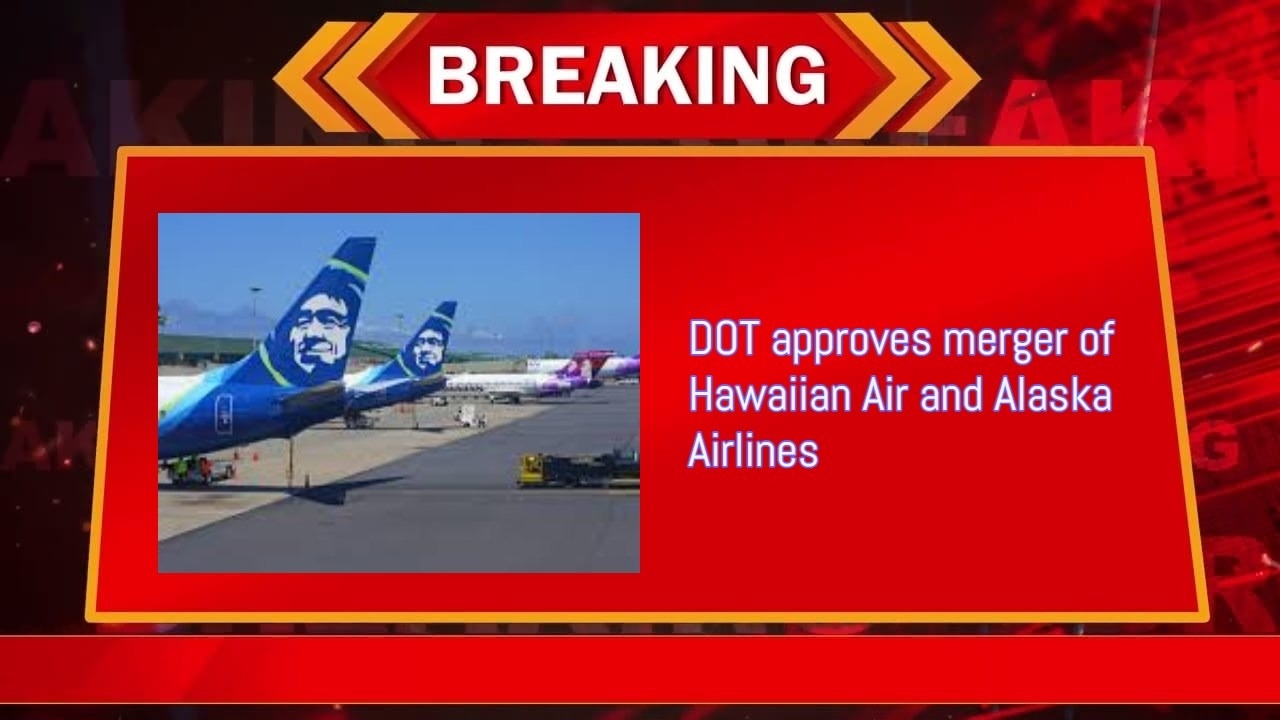ALASKA: Hawaiian Airlines’ Airbus A-330 was parked at its gate when an Alaska Airlines Boeing 737-MAX passed it on Tuesday at Daniel K. Inouye International Airport. After the airlines merge, Joe Sprague, seen on the right, who is now Alaska Airlines’ regional president of Hawaii/Pacific, will take over as Hawaiian Airlines’ CEO.
The combination of Alaska
After clearing the final regulatory obstacle on Tuesday, Hawaiian Airlines and Airlines will combine to become the first significant airline merger in the United States since Alaska Airlines and Virgin America were approved to unite in 2016. The airlines’ request to consolidate and run foreign routes under a single certificate—authorization necessary to perform air transportation as required—was approved by the U.S. Department of Transportation on Tuesday.
Hawaiian Airlines’ president and CEO, Peter Ingram, has announced his resignation effective immediately upon the $1.9 billion deal’s closing, according to Alaska Air Group, the parent company of Alaska Airlines. Forecasts from the industry indicate that the merger might happen as soon as today.
The deal, which includes $900 million in debt from Hawaii, will give $18 in cash per share to Hawaiian shareholders who approved the merger on February 16. “We have a unique, once-in-a-generation opportunity to combine two incredible companies with aligned values and over 90 years of legacy of serving and connecting local communities,” Sprague said in a statement. Working with these capable leaders from Hawaiian Airlines to guide the company’s personnel, business practices, and brand through this change.

Critical air services option
The agreement follows a lengthy losing streak for Hawaiian Airlines, whose finances have been difficult since at least COVID-19. Hawaiian had a $67.6 million net loss for the second quarter, or $1.30 per share, as opposed to a $12.3 million net loss for the same period last year.
The second-quarter loss per share was $1.37 once nonrecurring charges were taken into account. More than 120 destinations are served by Alaska Airlines and its regional partners throughout the United States, Belize, Canada, Costa Rica, Mexico, the Bahamas, and Guatemala.
The combined airlines of Alaska and Hawaiian will serve “54.7 million passengers annually and operate to 138 destinations, including nonstop service to 29 top international destinations in the Americas, Asia, Australia, and the South Pacific,” according to the joint application that the two airlines filed with the DOT on July 15.
“Will unlock more destinations for consumers and expand choice of critical air service options and access throughout the Pacific region, U.S. continent, and globally,” Alaska stated in a news statement on Tuesday about the airline merger.

